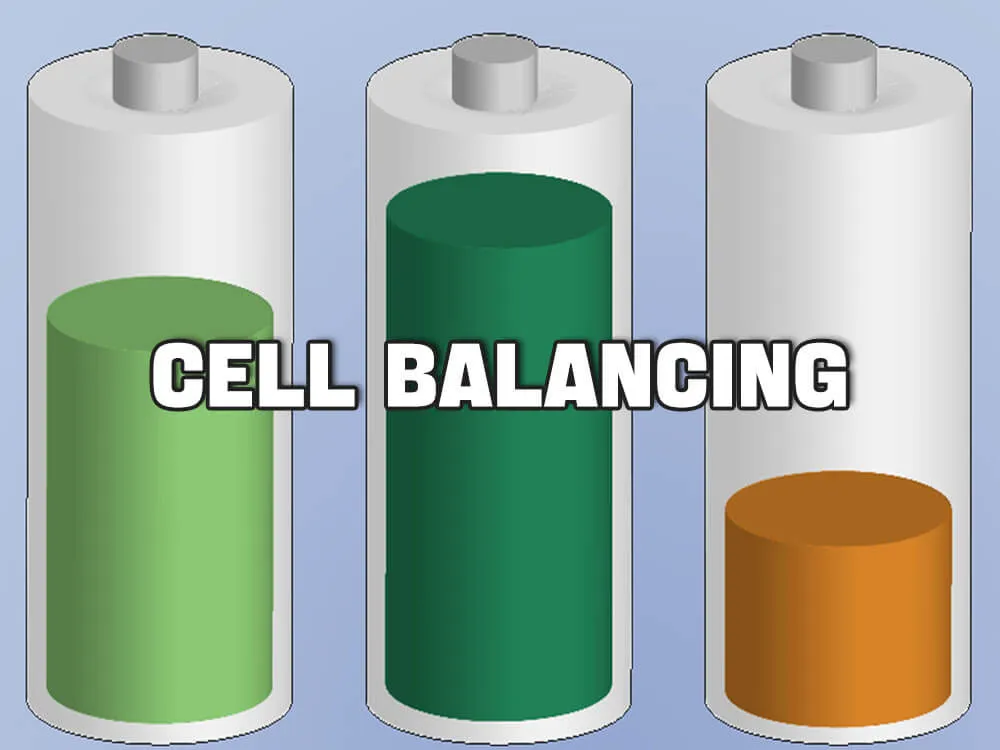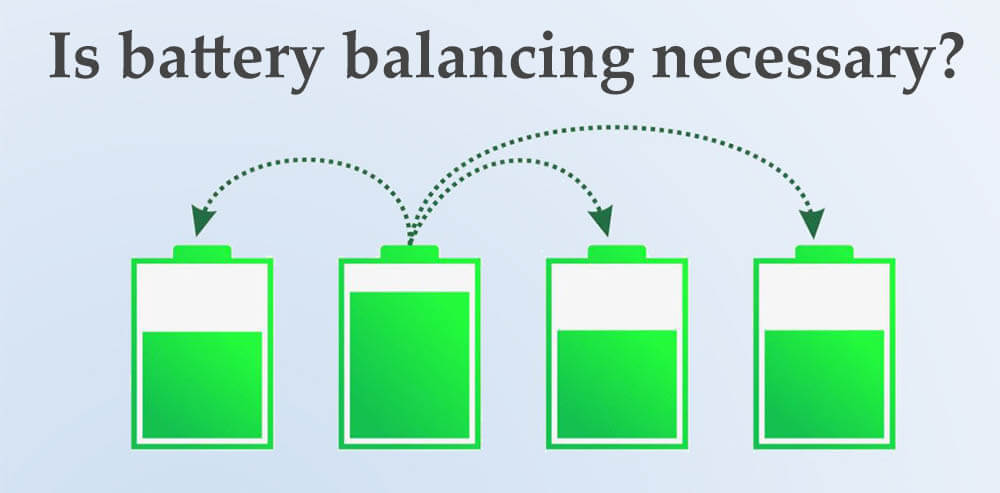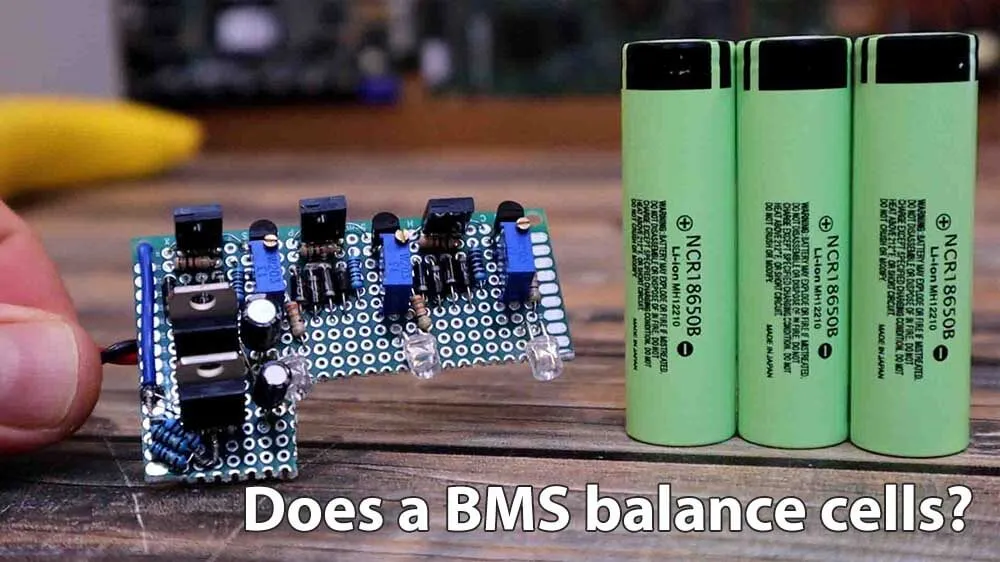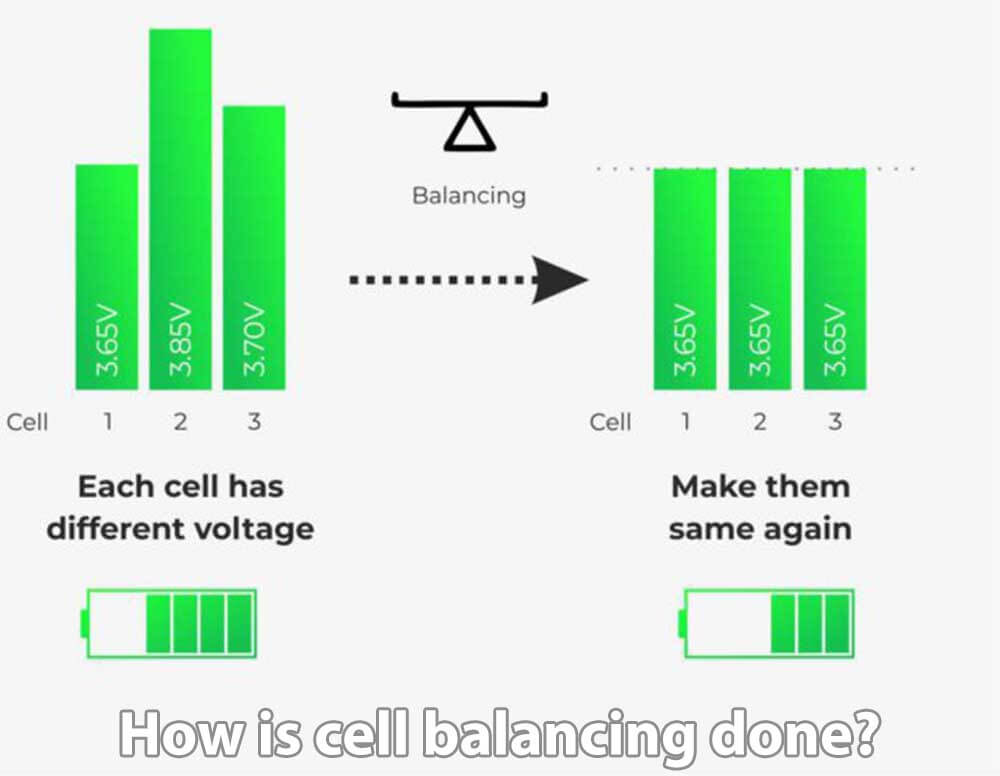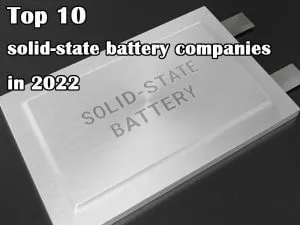What is cell balancing and how it works

Is cell balancing necessary
Because there will inevitably be inconsistencies in the manufacturing process of cells, such as the area of the metal foil, the uniformity of the coating, the amount of electrolyte filling, the operation of the equipment, etc. can not be completely consistent, this leads to differences in the DC internal resistance (DCR) and cell capacity of the cells.
Even if this difference is small, if it is not controlled, considering that the cells in the battery pack are generally connected in series by dozens or hundreds (in order to ensure that the output voltage is high enough, the cells are generally connected in series). Eventually, the capacity and output voltage of the entire battery pack will be greatly reduced due to the “short board effect”.
This is why it is necessary to cell balancing to achieve the same power output among the cells, not only to ensure the capacity of the battery pack, but also to ensure the consistency of the output voltage.
When charging, because the cells are connected in series, the cells with higher DCR will reach the charging cut-off voltage faster (the ternary lithium battery is 4.2V). If the charging is terminated, the cells with smaller DCR will have a smaller SOC because they do not reach the cut-off voltage, that is, failure to fully charge will result in a waste of capacity, which is extremely undesirable for electric vehicles.
What are the types of cell balancing
Battery cell balancing is generally divided into active balancing and passive balancing.
Passive cell balancing
Passive cell balancing refers to the use of resistors in the charging process to consume the energy of high-voltage or high-charge cells in order to reduce the gap between different cells, which is a kind of energy consumption. When the voltage of each single cell is close to the same, continue charging. This process is repeated until the voltage of each single cell is close to the same
Active cell balancing
Active cell balancing, using energy storage devices, etc., transfers part of the energy of the cells with more energy to the cells with less energy, which is the transfer of energy. During balanced charging, the control switch alternately connects the capacitor to two adjacent batteries, accepts the charging of the high voltage battery, and puts the electricity into the low-voltage battery until the voltages of the two batteries are the same.
Does a BMS balance cells
Under normal circumstances, the actual SOC upper limit of the battery pack will be set between 95% and 97%, but it will be displayed as 100% in the user interface, which is designed with safety in mind. Battery cell balancing is to balance the voltage or SOC inconsistency between the cells, and can adjust the charging inconsistency between the cells due to the inconsistency of physical properties through specific means.
For example, when the SOC of one cell reaches 97%, the SOC of another cell is only 90%, so the BMS needs to monitor the voltage or SOC data of each cell in real time for precise control, and set the SOC to 97%. The electric energy inside the cell is appropriately released or the electric energy is directly charged to the cell whose SOC is 90%. This is the two approaches of passive cell balancing and active cell balancing.
Although the cell balancing will lead to an increase in the charging time, after reaching the consistency between the cells, the working state of each cell tends to be consistent, and the capacity of the entire battery pack will not be destroyed due to the premature decay of the life of a single cell. decreased. After each cell has reached 97% SOC due to the effect of cell balancing, the entire battery pack is fully charged, so that the battery pack capacity of a single charge is optimal.
In the same way, cell balancing is also required during discharge. The purpose is to maintain the consistency of the voltage or SOC of each cell, and avoid the situation that one cell has been over-discharged and the other cell still does not reach the discharge cut-off voltage.
That is to say, the battery pack with cell balancing function can achieve the optimal SOC range during charging and discharging, ensuring that each cell can work within the SOC range of 5%-97%. Instead of the parameters of the cell with the largest internal resistance and the smallest capacity, the usable SOC range of the entire battery pack is determined.
Therefore, it is conceivable how much data collection and processing capability the BMS needs when performing cell balancing to complete this simple-sounding work of cell balancing. If you want to know what BMS manufacturers are, you can refer to top 10 battery management system suppliers.
How is cell balancing done
The pressure difference is generally considered to be the performance of the consistency of the cells. BMS balances the battery pack, hoping to reduce the pressure difference; To adjust the voltage of the battery cells, there is only one feasible way to adjust the SOC of the cells, and to adjust the pressure difference, it is necessary to adjust the SOC difference (charge or discharge a certain string individually).
In addition, if you consider the characterization parameters (capacity difference, internal resistance difference and residual power difference) in the first part, the capacity and internal resistance of the battery are the properties of the battery itself, and it is currently difficult to adjust by external methods. more difficult to control; However, if a certain cell in the battery pack is charged or discharged individually, the difference in the remaining power of the cells can be changed, so as to achieve the purpose of adjusting the consistency of the cells.
To sum up, the balance and maintenance of the consistency of the cells in the battery pack can only be accomplished by charging or discharging one or several cells (adjusting the difference in remaining power), and there is currently no other ideal way. Note that adjusting the remaining power difference does not necessarily reduce the remaining power difference. All current BMS equalization is achieved by charging and discharging individual cells in the battery pack.

